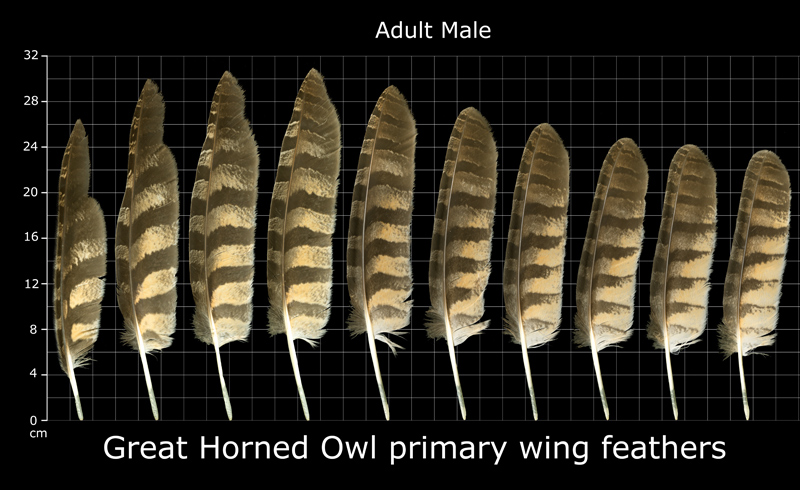Great horned owl feathers are all too soft to provide any kind of air-resistance at all. They serve two main purposes: one is obviously to protect the bird from cold and the other is give it a smooth but silent flight. The owl’s feathers seem more like a soft blanket—ideal for providing insulation. But the texture as well as the size of a feather are just a little different in that the primary wing feathers are quite distinguishable from its tail feathers. Similarly, if the owl’s flight feathers are damaged as it occurs all too often, the bird will probably die of starvation because if it can’t fly it can’t hunt. However, there’s much more to know about great horned owl feathers.
Great Horned Owl Feathers

The great horned owl is all covered with feathers. There’s not a single part that is naked or visible—not even the bird’s ears. The hornlike tuft feathers aren’t exactly its ears. They have nothing to do with the owl’s hearing sense. There are specialized feathers that cover the owl’s ear apertures. These round-shaped feathers aren’t useless at all. They will channel sound waves into the ear.
READ [Great Horned Owl Wingspan]
The feathers around the owl’s ears are distinguishable from the rest of its body feathers. These feathers are just opposite to the insulating feathers; they aren’t fluffy. They don’t create any sort of resistance even to the sound waves. In fact, the sound waves get through the feathers as if there is none.
All feathers on the owl’s body are fluffy save or the facial disk feathers. The feathers around the facial disk are fluffy only at the end. They are meant to keep out dust particles and dirt from the ears. The facial disk feathers are arranged in a bowl consequently providing satellite dish platform for sound waves to focus towards the owl’s ears. This explains why owls can have the remarkable hearing sense.
Significance of Feathers in the Great Horned Owl’s Flight
Unlike falcon’s, the great horned owl feathers aren’t aerodynamic but they are nevertheless adapted for silent flight. That’s right, great horned owl feathers are so designed that the bird doesn’t make any sound even if it gets closer to its prey. Let’s see how.
The cryptic coloration of owl’s feathers enable the bird to camouflage into the thick greenery they nestled against. They aren’t only waterproof—great horned owl’s feathers are extremely quiet just like a fabric. Let’s talk about primary feathers. The outer edges of a feather are serrated causing no turbulence whatsoever during flight. Eventually the owl is able to make a silent flight. This in turn, makes these owl a sneak hunter as they do not wish to startle their prey.
READ [Great Horned Owl Adaptations]
Most birds, let alone birds of prey, are thought to make pretty much noise when they are flying because their feathers rub against each other. But that is not to say that owl’s feathers do not collide; they do rub against each other but their surface is just too soft to make a noise.
Prominent among great horned owl feathers are primary feathers. These primary feathers are probably the strongest and there’s a good reason for this too. These feathers are essential for the owl’s flight so much so that if some of them are damaged then the bird is unlikely to fly. Each of this primary feather doesn’t seem to have stiff leading edge (like in all other birds) so as to create a huge air turbulence. There are gaps between the edges which eventually break up the air turbulence into tiny turbulence. Thus, the owl can afford to fly like a ghost.












